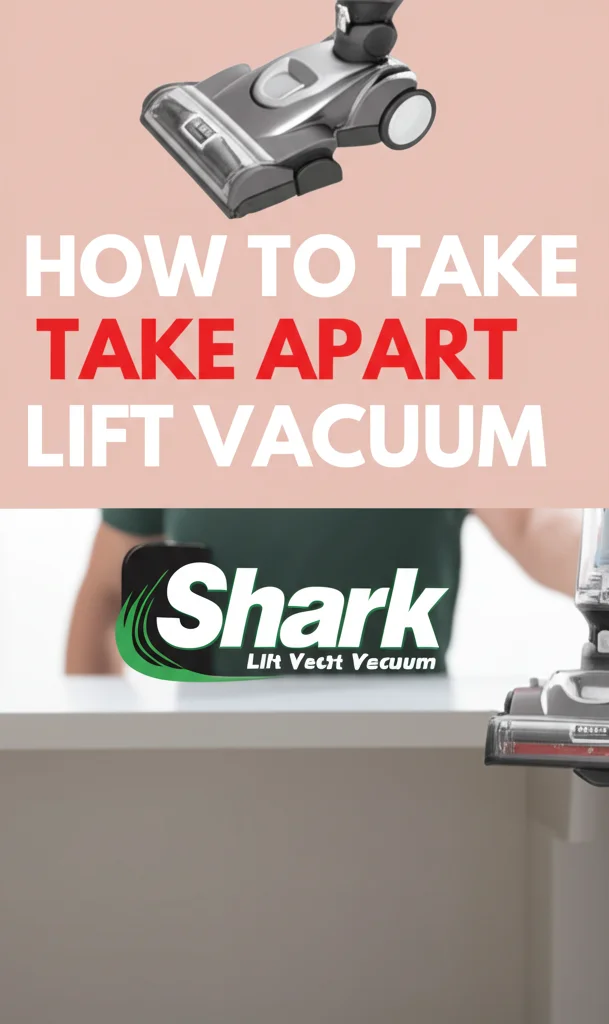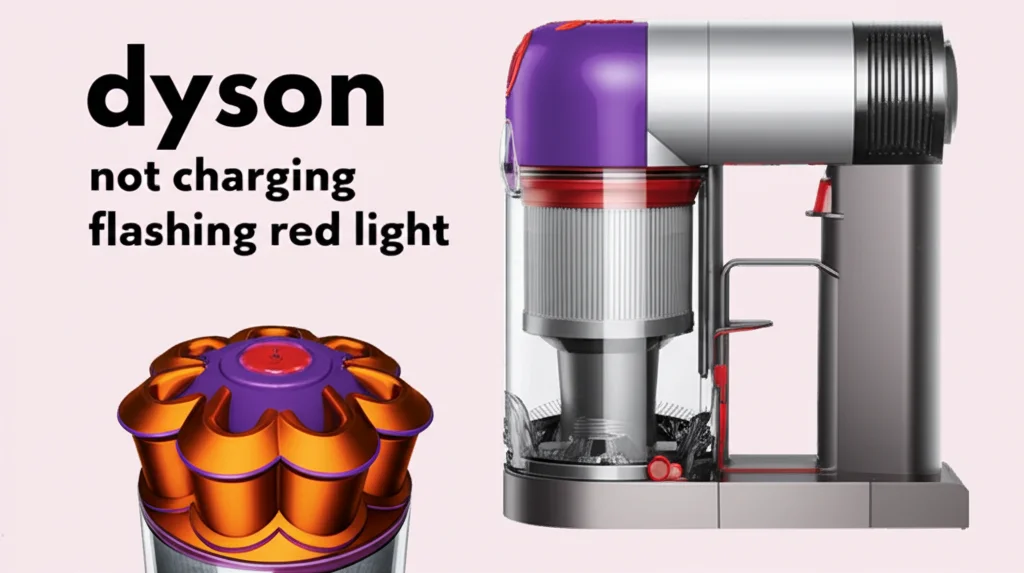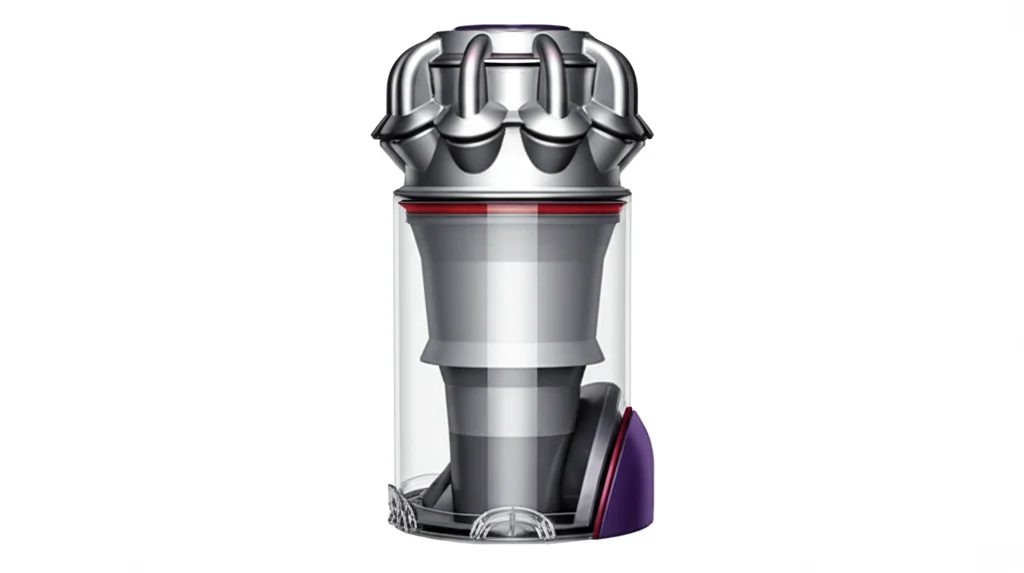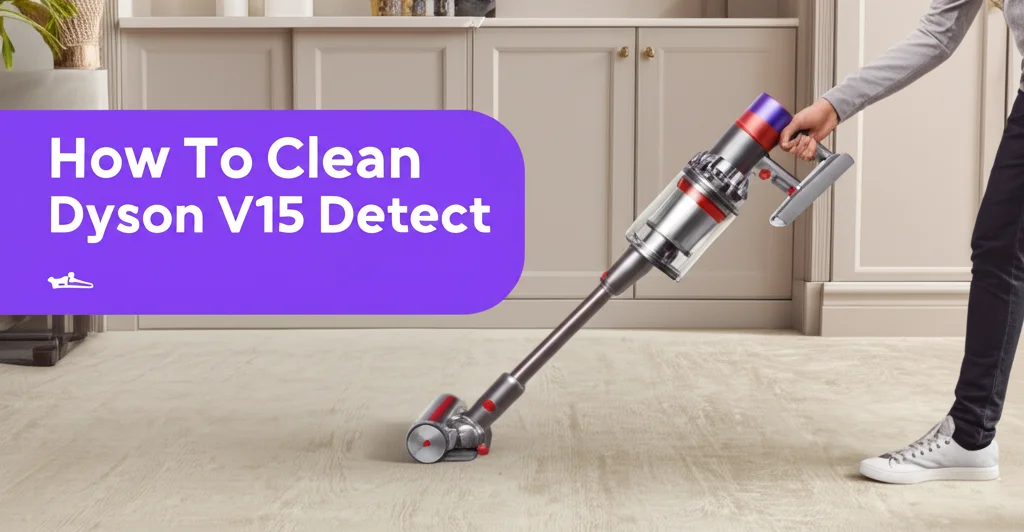· Vacuum Cleaners · 7 min read
How To Take Apart Shark Lift Vacuum

Taking Your Shark Lift Vacuum Apart: A Step-by-Step Guide
Is your Shark Lift vacuum losing suction, making strange noises, or just generally not performing like it used to? Often, the solution isn’t a new vacuum, but a thorough cleaning of its internal components. Taking your Shark Lift vacuum apart can seem daunting, but with the right guidance, it’s a manageable DIY project. This article will walk you through the process, step-by-step, ensuring you can restore your vacuum to its former glory. We’ll cover everything from basic disassembly to cleaning specific parts, helping you maintain a clean and efficient home.
Takeaway:
- Regular disassembly and cleaning improve suction power.
- Identifying and replacing worn parts extends the vacuum’s lifespan.
- Following safety precautions prevents damage to the vacuum and injury to yourself.
Quick Answer:
To take apart a Shark Lift vacuum, unplug it, detach the dust cup and filters, release the wand, disassemble the brushroll housing, and carefully open the main body to access internal components for cleaning and repair.
Understanding Your Shark Lift Vacuum Model
Before you begin, it’s important to understand that Shark Lift vacuums come in various models. While the general principles of disassembly are similar, slight variations exist. Knowing your specific model number (usually found on a sticker on the vacuum body) will help you find model-specific instructions or videos online. This will ensure you’re following the correct steps for your particular vacuum. Shark’s website often provides exploded diagrams for different models, which can be incredibly helpful.
Safety First: Preparing for Disassembly
Safety should always be your top priority. Before you even think about taking your Shark Lift vacuum apart, unplug it from the power outlet. This prevents accidental activation and potential electric shock. Next, empty the dust cup and remove any filters. These are often the first components you’ll encounter and removing them provides easier access to other parts. Finally, gather your tools: a Phillips head screwdriver is essential, and a small flathead screwdriver can be useful for prying open certain clips.
Detaching the Wand and Hose
The wand and hose are usually the easiest parts to detach. Most Shark Lift models have a release button or clip that allows you to separate the wand from the vacuum body. Press the button or release the clip and gently pull the wand away. The hose typically connects to the vacuum body with a secure fitting. Twist and pull the hose to disconnect it. Inspect both the wand and hose for any clogs or debris. A blocked wand or hose can significantly reduce suction. You can use a long, flexible brush or a straightened coat hanger to clear any obstructions. https://www.beacleaner.com/how-to-clean-waterproof-laminate-floors/ provides helpful tips on maintaining floor surfaces after vacuuming.
Disassembling the Brushroll Housing
The brushroll housing contains the brushroll, which is responsible for agitating carpets and loosening dirt. To disassemble this, you’ll typically need to remove a cover plate, usually held in place by screws. Once the cover plate is removed, you can access the brushroll. The brushroll itself is usually held in place by end caps. Remove these end caps to slide the brushroll out. Inspect the brushroll for tangled hair, threads, and other debris. Remove any obstructions and clean the brushroll thoroughly. Also, check the bearings for smooth rotation. If the bearings are worn, the brushroll may need to be replaced.
Cleaning the Brushroll and Housing
Once the brushroll is removed, take the opportunity to clean the brushroll housing. Use a vacuum cleaner with a crevice tool to remove any loose dirt and debris. For stubborn dirt, you can use a damp cloth with a mild detergent. Ensure the housing is completely dry before reassembling. Pay attention to any areas where hair or fibers tend to accumulate. Regular cleaning of the brushroll housing prevents buildup and maintains optimal performance.
Opening the Main Vacuum Body
This is the most complex part of the disassembly process. The main vacuum body houses the motor, fan, and other critical components. Locate the screws that hold the two halves of the vacuum body together. These screws are usually located on the underside of the vacuum. Remove all the screws carefully, keeping track of their location. Once all the screws are removed, gently pry the two halves of the vacuum body apart. Be careful not to force anything, as you could damage the internal components. https://www.beacleaner.com/how-to-clean-vinyl-plank-flooring/ offers advice on keeping your floors clean after vacuuming.
Inspecting and Cleaning Internal Components
With the vacuum body open, you can access the motor, fan, and other internal components. Inspect the fan for any damage or obstructions. Remove any dust or debris from the fan blades. The motor should be free of dust and debris as well. You can use a soft brush or a vacuum cleaner with a brush attachment to clean the motor. Never use water or liquid cleaners on the motor. Check the filters and replace them if they are dirty or damaged. A clogged filter can significantly reduce suction power.
Reassembling Your Shark Lift Vacuum
Reassembly is essentially the reverse of disassembly. Start by carefully aligning the two halves of the vacuum body and securing them with the screws. Ensure all screws are tightened securely, but don’t overtighten them. Reinstall the brushroll housing, wand, and hose. Double-check all connections to ensure they are secure. Finally, reinstall the dust cup and filters. Before plugging the vacuum back in, visually inspect everything to make sure all parts are properly installed.
Testing and Troubleshooting
Once reassembled, plug in your Shark Lift vacuum and test it. Listen for any unusual noises. Check the suction power. If the vacuum still isn’t performing as expected, double-check all connections and ensure all parts are properly installed. If you’re still having trouble, consult the Shark website or a qualified appliance repair technician. https://www.beacleaner.com/how-to-get-dog-poop-out-of-the-carpet/ can help you clean up any messes your vacuum might miss.
Frequently Asked Questions (FAQs)
Q: How often should I take apart my Shark Lift vacuum?
A: It’s recommended to disassemble and thoroughly clean your Shark Lift vacuum at least every 3-6 months, depending on usage. More frequent cleaning may be necessary if you have pets or allergies.
Q: Can I use water to clean the motor?
A: No, never use water or liquid cleaners on the motor. This can cause electrical damage and void your warranty.
Q: What if I can’t find replacement parts?
A: Replacement parts for Shark Lift vacuums are readily available online and at many appliance repair stores. Check the Shark website or a reputable online retailer.
Q: Is it difficult to reassemble the vacuum?
A: While it may seem daunting, reassembly is generally straightforward if you follow the disassembly steps in reverse and keep track of all the screws and parts.
Q: What should I do if I break a part during disassembly?
A: If you break a part, you’ll need to replace it. Check the Shark website or a reputable online retailer for replacement parts.
Conclusion
Taking apart your Shark Lift vacuum for cleaning and maintenance is a worthwhile investment of your time. By following these steps, you can restore your vacuum’s suction power, extend its lifespan, and maintain a cleaner home. Remember to prioritize safety, be patient, and consult your vacuum’s manual for model-specific instructions. A well-maintained Shark Lift vacuum will continue to provide reliable cleaning performance for years to come. Don’t hesitate to tackle this DIY project – you might be surprised at how easy it is! Now that you know how to maintain your vacuum, explore other cleaning tips on our site, like https://www.beacleaner.com/how-to-clean-hardwood-floors-with-vinegar/ for keeping your floors sparkling.




